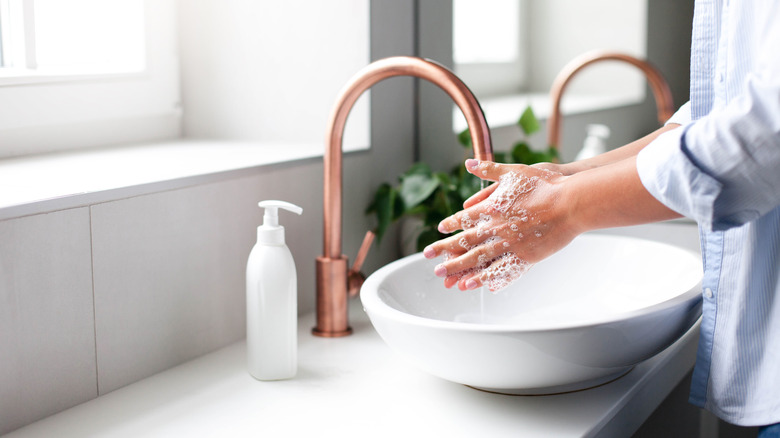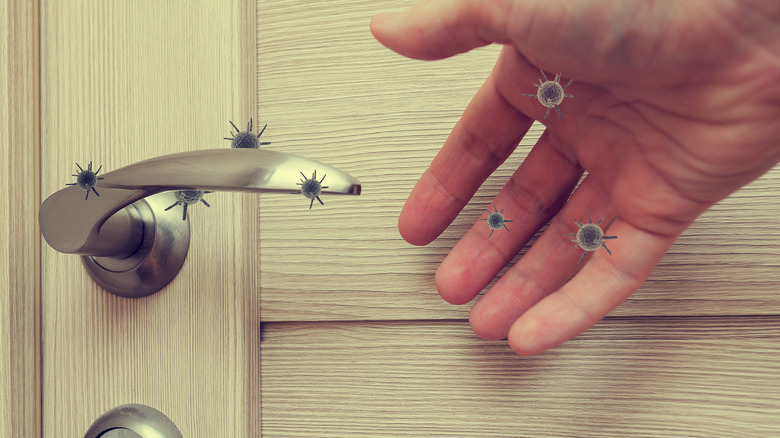The Unexpected Reason You Should Bring Copper Into Your Bathroom Décor
Most bathrooms are fairly simplistic — light-colored walls, neutral tiling, simple, easy-to-clean countertops — so incorporating fun and functional metallic details is one of the most common ways to add a touch of color and texture to your space. Shiny stainless steel gives off a modern, sleek look, and weathered brass is perfect for antique lovers and older homes. Opting for trendy copper hardware, however, might actually carry an unexpected benefit for you and your family.
While copper faucets and handles might be more expensive than most other metals (averaging around $150 at Lowe's, for example), they make a much bolder statement than the typical steel and pair nicely with a wide variety of colors and textures to create a luxurious look in your bathroom space. Most people who choose copper do so because of its trademark pinky-gold hue and aesthetic value, but it turns out it's an excellent option if you're looking to maintain a clean, germ-free space, even between routine cleanings.
The germ-fighting benefits of copper
Bathrooms are one of the places in the home that people are most cognizant of germs, and it's clear to see why. According to WebMD, bathrooms often harbor gastrointestinal viruses, staph, MRSA, and E. coli, among other various common pathogens. Luckily, however, if you clean regularly and practice good personal hygiene, these germs shouldn't present any issues or get you sick.
If you want to add an extra layer of protection, however, it's a great idea to incorporate copper touches in your space. Metal is frequently used for accents like cabinet pulls, door handles, and faucets, and copper has been proven to kill bacteria and viruses on contact, an important characteristic for high-touch surfaces. According to a study from Applied and Environmental Microbiology, the United States Environmental Protection Agency has classified copper as the first-ever antimicrobial material because of its contact killing properties, and even recommends it for use in sterile medical settings.
How does contact killing work?
There are five reasons for copper's contact killing power, but it all happens on a molecular level (via EOScu). The first involves copper's tendency to oxidize. As it does so, it pulls electrons from nearby bacteria, breaking down the cell wall and causing the bacteria to die. Another method is through the release of free radicals — highly reactive atoms. These atoms steal electrons from surrounding organisms in order to create a stable pair, and, again, the bacteria's cell wall is destroyed. Finally, the last three of these methods involve copper ions flooding the already-fragile cells after breaking down their walls.
The combination of all of these properties means that bacteria and viruses that come into contact with copper usually die within a few minutes, so even between your routine cleanings, your handles and faucets are doing a bit of tidying themselves. Incorporating copper into your bathroom may be a bit more expensive, but you can rest assured that the metal is making your job of disinfecting your space a bit easier.


